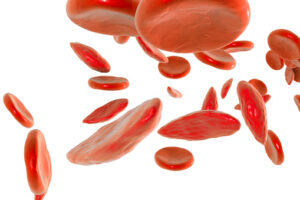Since March 2020, the COVID-19 pandemic has strained blood inventories, so researchers at one Philadelphia hospital implemented new measures to reduce blood use in patients with sickle cell disease (SCD). Fifty patients (mean age, 23.5 years [range: 9 to 44 years]) with SCD requiring chronic red cell exchanges every 3 to 5 weeks were followed for 6 months from March 2020 to September 2020 to determine if two new measures reduced blood usage. By first measuring the pretransfusion hemoglobin S (HbS) and calculating the precise number of matched donor units required and second raising the red cell exchange end hematocrit, 18% fewer units of red cells were transfused (1594 units) compared to 6 months before the pandemic (1945 units transfused). The mean fraction of cells remaining (FCR) increased for patients, but the percent of HbS was maintained below each patient’s goal without changing the transfusion interval. While precise calculation of HbS could continue to help conserve units of red cells, increasing hematocrit to enhance suppression of endogenous erythropoiesis should only be implemented in severe blood shortages. Serious adverse events did not increase with these new measures, and reducing units transfused also decreases donor exposure and risk of alloimmunization.
Reference:

